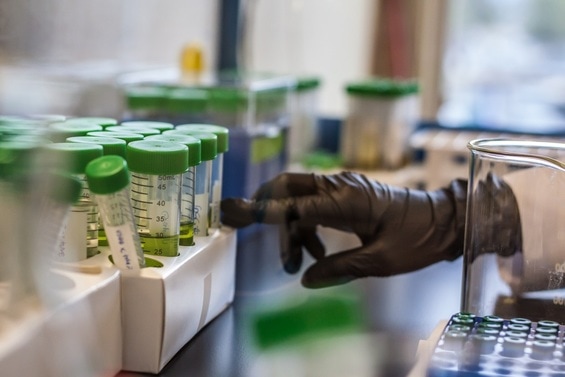As of January 1st, 2018, the cannabis testing regulations in California were updated by the California Bureau of Cannabis Control. All cannabis products sold commercially from this date will now require certified third party cannabis lab testing. The extensive list of regulations will not be discussed in their entirety here, but there are a few things that you should be aware of.
California’s Proposed Cannabis Testing Regulations
Based on the latest proposed regulations, all cannabis/cannabis products that have been manufactured/harvested on or after their specific phase-in dates will be subjected to mandatory testing for the following analytes:
(1) Cannabinoids;
(2) Foreign material;
(3) Heavy metals;
(4) Microbial impurities;
(5) Mycotoxins;
(6) Moisture content and water activity;
(7) Residual pesticides;
(8) Residual solvents and processing chemicals;
(9) If tested, terpenoids;
(10) If tested, homogeneity.
Here is a breakdown of how the phase-in is proposed to take place:
- Cannabinoids
- THC; THCA; CBD; CBDA; CBG; and CBN
- Moisture Content
- A cannabis sample shall be deemed to have passed moisture content testing if the moisture
- content does not exceed 13.0%
- Category II Residual Solvents and Processing Chemicals (pass/fail activity levels not listed)
- Acetone, Acetonitrile, Butane, Ethanol, Ethyl acetate, Ethyl ether, Heptane, Hexane, Isopropyl alcohol, Methanol, Pentane, Propane, Toluene, Total xylenes (ortho-, meta-, para-).
- Category I Residual Pesticides (pass/fail activity levels not listed)
- Aldicarb, Carbofuran, Chlordane, Chlorfenapyr, Chlorpyrifos, Coumaphos, Daminozide, DDVP (Dichlorvos), Dimethoate, Ethoprop(hos), Etofenprox, Fenoxycarb, Fipronil, Imazalil, Methiocarb, Methyl parathion, Mevinphos, Paclobutrazol, Propoxur, Spiroxamine, Thiacloprid
- Microbial Impurities
- Required tests for ANY inhalable cannabis or cannabis product:
- Shiga toxin–producing Escherichia coli (E.Coli) is not detected in 1 gram
- Salmonella spp. is not detected in 1 gram;
- Pathogenic Aspergillus species A. fumigatus, A. flavus, A. niger, and A. terreus are not
- detected in 1 gram.
- Required tests for ANY other cannabis product:
- Shiga toxin–producing Escherichia coli (E.Coli) is not detected in 1 gram;
- Salmonella spp. is not detected in 1 gram.
- Required tests for ANY inhalable cannabis or cannabis product:
- Homogeneity in edibles
- The laboratory shall analyze a sample of edible cannabis product that contains more than one
- serving per unit to determine whether the edible cannabis product is of homogeneous THC
- content
- A sample of edible cannabis product shall be deemed to have passed homogeneity testing if
- the relative standard deviation of THC concentration between the samples collected does not
- exceed plus or minus 10%.
Additional tests will be required, in addition to the aforementioned tests. They are as follows:
- Category I Residual Solvents and Processing Chemicals (pass/fail activity levels not listed)
- 1,2-Dichloroethane, Benzene, Chloroform, Ethylene oxide, Methylene chloride, Trichloroethylene
- Category II Residual Pesticides (pass/fail activity levels not listed)
- Abamectin, Acephate, Acequinocyl, Acetamiprid, Azoxystrobin, Bifenazate, Bifenthrin, Boscalid, Captan, Carbaryl, Chlorantraniliprole, Clofentezine, Cyfluthrin, Cypermethrin, Diazinon, Dimethomorph, Etoxazole, Fenhexamid, Fenpyroximate, Flonicamid, Fludioxonil, Hexythiazox, Imidacloprid, Kresoxim-methyl, Malathion, Metalaxyl, Methomyl, Myclobutanil, Naled, Oxamyl, Pentachloronitrobenzene, Permethrin, Phosmet, Piperonylbutoxide, Prallethrin, Propiconazole, Pyrethrins, Pyridaben, Spinetoram, Spinosad, Spiromesifen, Spirotetramat, Tebuconazole, Thiamethoxam, Trifloxystrobin
- Foreign Material – test conducted by viewing with the naked eye
- 1/4 of the total sample area covered by sand, soil, cinders, or dirt;
- 1/4 of the total sample area covered by mold;
- 1 insect fragment, 1 rodent hair, or 1 count mammalian excreta (poop, feces) per 3.0 grams;
- 1/4 of the total sample area covered by an embedded foreign material.
The following tests are mandatory, in addition to the aforementioned tests:
- Terpenoids
- The laboratory shall analyze a sample of cannabis or cannabis product to determine whether
- the terpenoid profile of the sample conforms to the labeled content of terpenoids.
- A sample shall be deemed to have passed the terpenoid testing if the concentration of
- terpenoids does not exceed the labeled content of total terpenoids, plus or minus 10 percent.
- Mycotoxins
- A sample shall be deemed to have passed mycotoxin testing if both the following conditions
- are met:
- Total of aflatoxin B1, B2, G1, and G2 does not exceed 20 µg/kg of substance
- Ochratoxin A does not exceed 20 µg/kg of substance.
- Heavy Metals (pass/fail activity levels not listed)
- Cadmium, Lead, Arsenic, and Mercury
- Water Activity
- A cannabis (flower) sample shall be deemed to have passed water activity testing if the water activity
- does not exceed 0.65 Aw (Aw = water activity units, or the partial vapor pressure of water in a substance divided by the standard state partial vapor pressure of water.)
- The laboratory shall analyze edible cannabis products to determine the level of water activity.
- A solid or semi-solid edible cannabis product shall be deemed to have passed water activity
- testing if the water activity does not exceed 0.85 Aw. [1]
Why is cannabis lab testing so important?
Laboratory testing ensures the potency and safety of all kinds of cannabis products, from oils and infused candies, to dry leaf and flower. Furthermore, cannabis testing minimizes the risk of contamination and enhances product quality. So, with the above information in mind, you can ensure that you are adhering to the highest standards of cannabis/cannabis product production.
References:
[1] http://bcc.ca.gov/law_regs/mcrsa_lab_ptor.pdf







